11 Trees with Heart Shaped Leaves

This post follows our research editorial guidelines.

Heart-shaped leaves are a beautiful and unique way to spruce up your garden this season. Heart-shaped leaves are one of any landscape design’s most romantic and eye-catching features. Combine this with pink or purple flowering trees and you’ve got a true recipe for success.
From evergreen trees to deciduous shrubs, 11 species with heart-shaped leaves will bring a special touch to your outdoor space. Let’s explore each type and find out how they can fit into your garden plan.

Table of Contents
1. Northern Catalpa

This deciduous tree can grow up to 60 feet in height, making it one of the largest varieties. Its heart-shaped leaves are smooth and medium green in color, and its long white flowers bloom in late spring and early summer.
Apart from its stunning aesthetic, it is also famous for its resistance to pests and diseases.
| Botanical Name: | Catalpa speciosa |
| Hardiness Zones: | Zones 4-8 |
| Native Range: | Western Tennessee, Northern Arkansas, Southern Illinois, Southern Indiana |
| Tolerate: | Drought, clay soil |
| Light Requirements: | Full sun to partial shade |
| Soil Type: | Adaptable but prefers well-drained soil |
| Watering Needs: | Moderate watering needs once established |
| Fertilizing Needs: | Light fertilization in spring and early summer |
| Pruning Needs: | Prune to shape and control size as needed; remove dead branches. |
2. Silver Lime
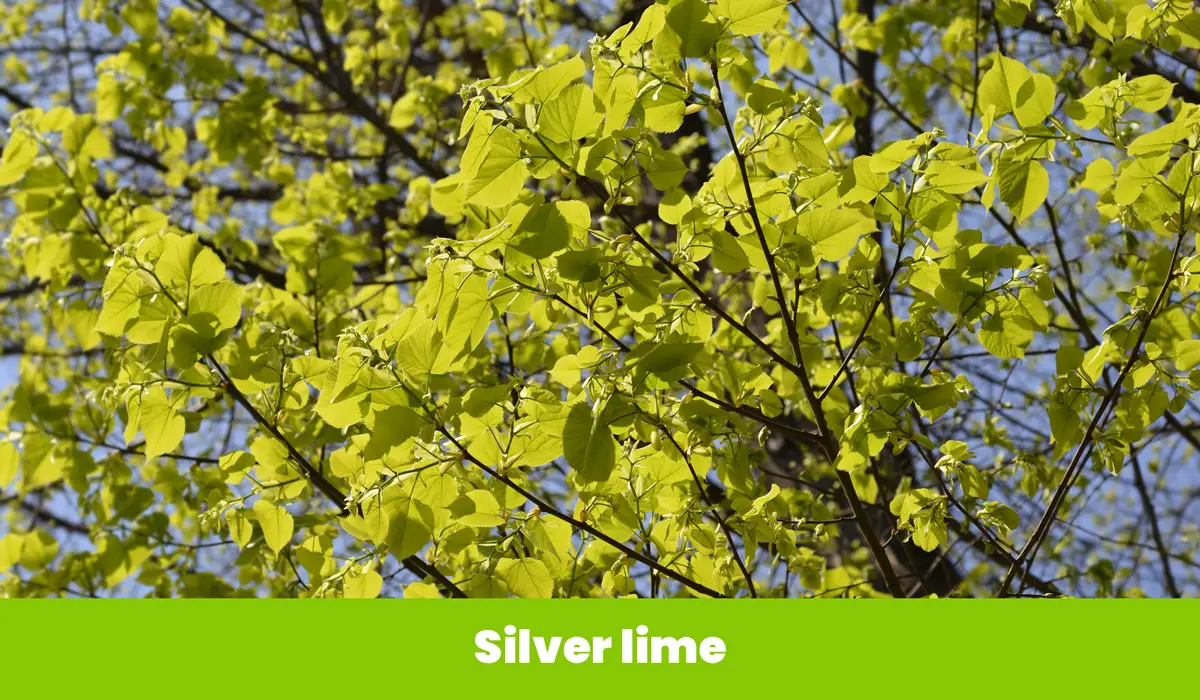
Silver Lime is an ornamental tree with heart-shaped, serrated leaves and silver undersides. It produces fragrant yellow flowers in the early summer and small nut-like fruits in the late summer.
This tree grows up to 70 feet tall, with a wide umbrella-shaped canopy that provides excellent shade coverage.
| Botanical Name: | Tilia tomentosa |
| Hardiness Zones: | Zones 5-7 |
| Native Range: | Europe and Western Asia |
| Tolerate: | Air pollution, droughts, and clay soils |
| Light Requirements: | Full sun to partial shade |
| Soil Type: | Prefers well-drained soils with a neutral pH balance. |
| Watering Needs: | Moderate watering needs; water weekly during dry spells. |
| Fertilizing Needs: | Low fertilizing needs; use a balanced 10-10-10 fertilizer once per year in spring or early summer. |
| Pruning Needs: | Prune branches in late winter to control the size and shape of the canopy. |
3. American Lime
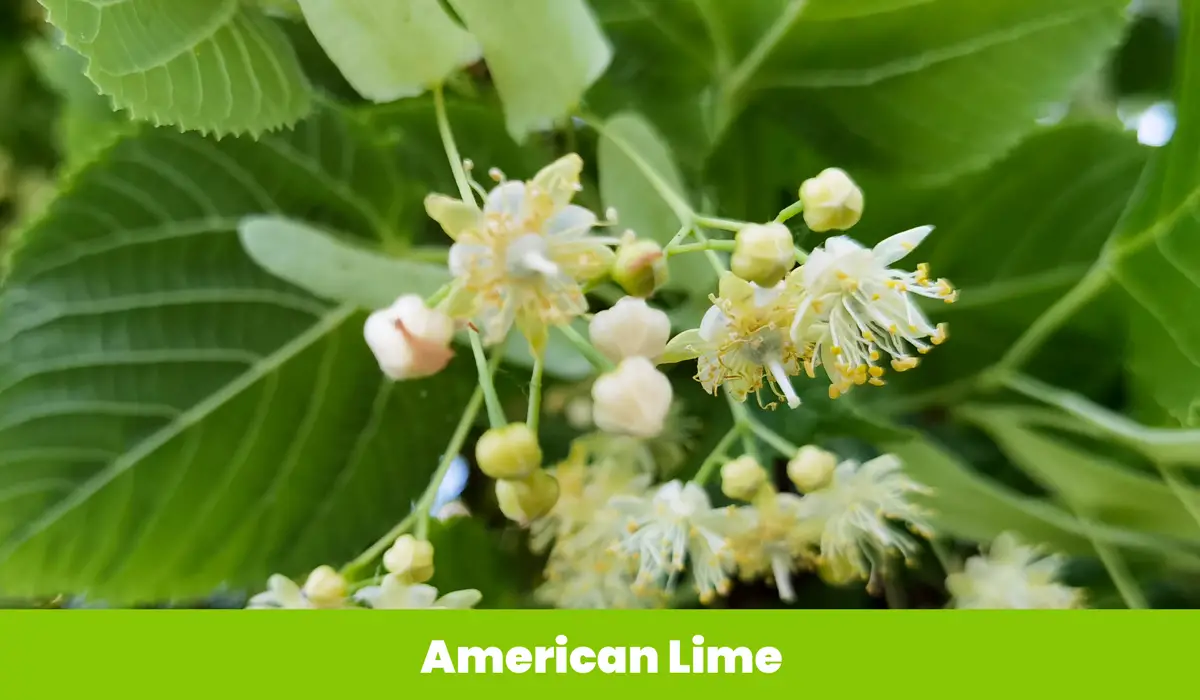
This beautiful deciduous tree is American Basswood and has a pyramidal shape with dense, dark green heart-shaped leaves. In the summer months, it produces honey-scented yellowish flowers that attract pollinators.
It grows up to 80 feet tall and is an excellent choice for backyard shade or specimen planting in parks and gardens.
| Botanical Name: | Tilia Americana |
| Hardiness Zones: | Zones 2-8 |
| Native Range: | Northeastern United States |
| Tolerate: | Air pollution and clay soils |
| Light Requirements: | Full sun to partial shade |
| Soil Type: | Prefers moist but well-drained soil |
| Watering Needs: | Low to medium watering needs |
| Fertilizing Needs: | Low to moderate fertilization |
| Pruning Needs: | Prune in late winter to early spring for best results |
4. Empress Tree
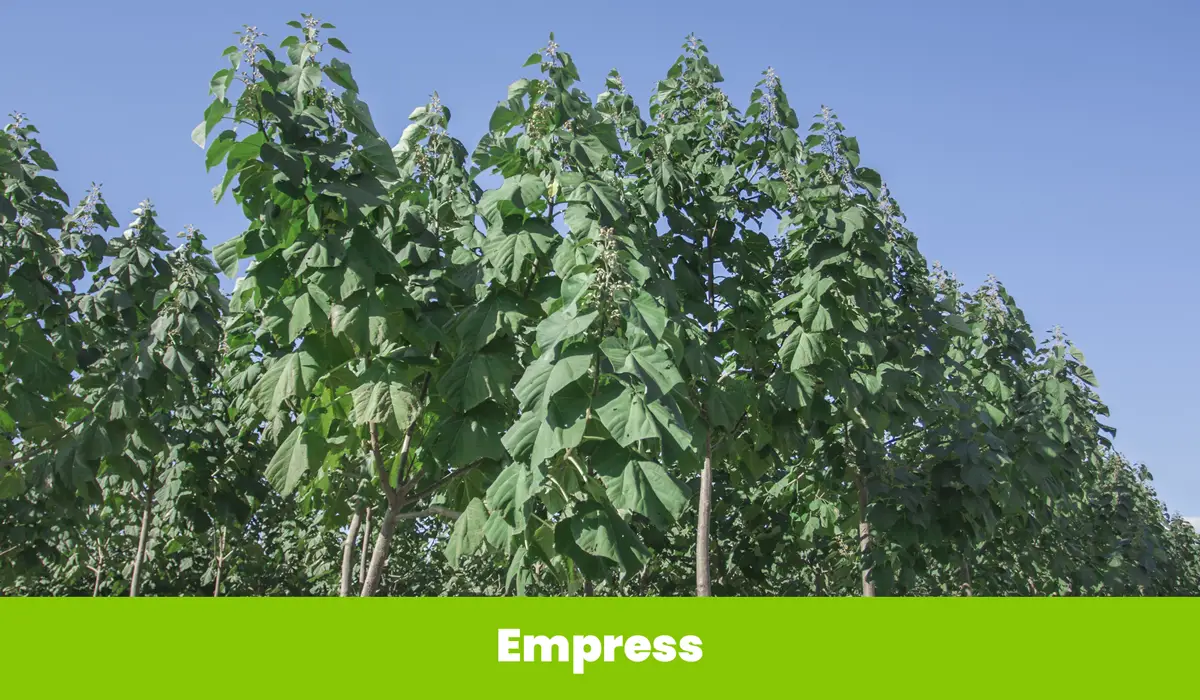
The Empress Tree is for you if you’re after an ornamental tree with showy heart-shaped leaves and pretty pinkish-purple flowers. This fast-growing deciduous tree can reach up to 40 feet in height and prefers full sun. Its fragrant blooms are followed by large seed pods that contain edible pulp, making it a great food source for wildlife.
| Botanical Name: | Paulownia tomentosa |
| Hardiness Zones: | Zones 6-9 |
| Native Range: | China |
| Tolerate: | Poor soil types, air pollution, and drought |
| Light Requirements: | Full sun |
| Soil Type: | Prefers moist, well-drained soil |
| Watering Needs: | Regular watering during the first season of growth |
| Fertilizing Needs: | Little to no fertilization is required |
| Pruning Needs: | Prune to shape as needed in late winter or early spring for best aesthetics. |
5. Quaking Aspen

Quaking Aspen is an easily recognizable tree due to its heart-shaped leaves, quilted texture, and bright yellow fall foliage. It proliferates and can live up to 200 years old, with a trunk diameter of 1-2 feet.
Quaking Aspen provides many benefits for both people and wildlife; its bark, leaves, twigs, flowers, and cones offer food sources for different species of animals, such as birds and small mammals.
Its distinctive white bark also helps cool the area around it during the hot summer by providing shade.
| Botanical Name: | Populus Tremuloides |
| Hardiness Zones: | Zones 1-6 |
| Native Range: | North America |
| Tolerate: | Moderate drought, salt spray, and extreme temperatures |
| Light Requirements: | Full sun to light shade |
| Soil Type: | Moist, well-drained soils with a neutral pH balance |
| Watering Needs: | Moderate; water weekly during dry spells. Do not over-water |
| Fertilizing Needs: | Not necessary if the soil is healthy |
| Pruning Needs: | Prune in late winter or early spring before new growth appears |
6. Foxglove Tree

Foxglove is a stunning plant featuring distinct heart-shaped leaves. Growing up to five and a half feet in height, this biennial plant produces unique purple or white bell-shaped flowers along its stem.
| Botanical Name: | Digitalis purpurea |
| Hardiness Zones: | Zones 4 – 8 |
| Native Range: | Western and Central Europe |
| Tolerate: | Most soil types as long as it’s well-draining |
| Light Requirements: | Full sun or partial shade |
| Soil Type: | Prefers slightly acidic, moist and well-drained |
| Watering Needs: | Regular watering throughout the growing season |
| Fertilizing Needs: | Once a year in early spring |
| Pruning Needs: | Deadheading spent flowers and may want to cut back after flowering is done. |
7. Italian Alder
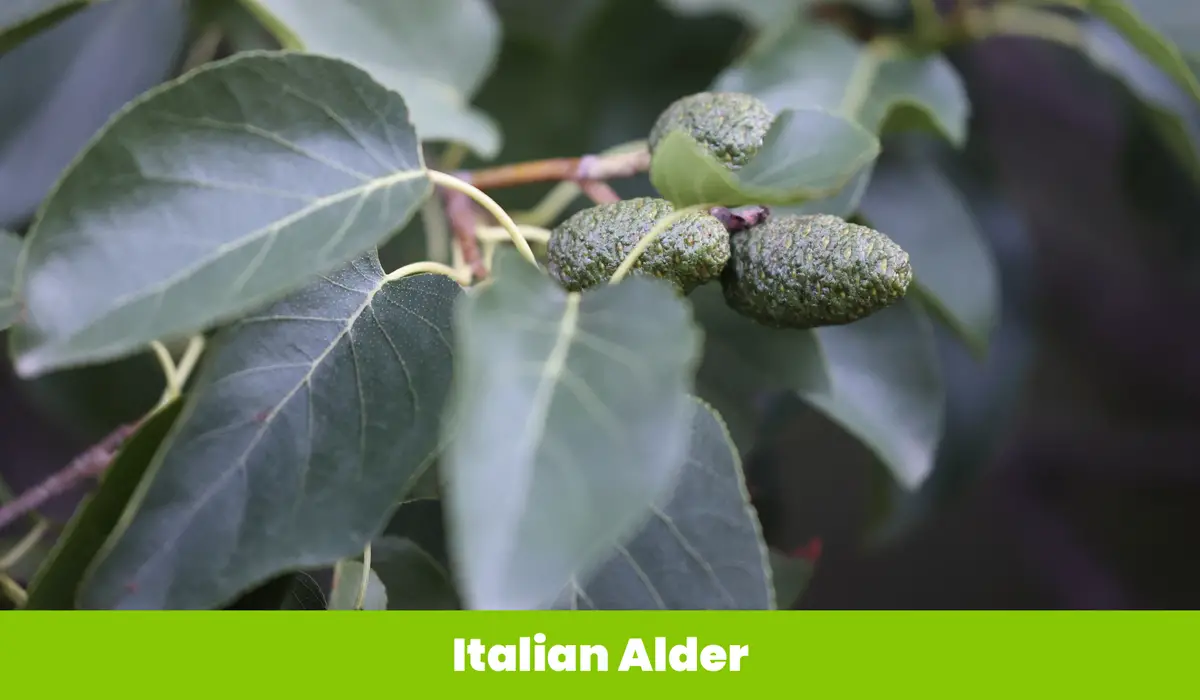
Italian Alder is a fast-growing deciduous tree with deeply lobed, heart-shaped leaves and attractive red twigs. In the spring, it produces cone-like clusters of fragrant white flowers.
It is a very hardy tree and tolerates wet soils better than most other trees. It provides shelter and food for wildlife, making it a great addition to any garden.
| Botanical Name: | Alnus cordata |
| Hardiness Zones: | Zones 6-9 |
| Native Range: | Southern Italy |
| Tolerate: | Air Pollution |
| Light Requirements: | Full sun to partial shade |
| Soil Type: | Moist, well-drained, and fertile soil |
| Watering Needs: | Medium moisture requirement |
| Fertilizing Needs: | Low when established |
| Pruning Needs: | Prune regularly for best form. Dead branches should be removed as needed |
8. Eastern Redbud

Eastern Redbud is a small deciduous tree offering stunning pink flowers in the springtime. It has glossy heart-shaped leaves and attractive gray bark.
The Eastern Redbud is an excellent choice for wildlife gardens as its seed pods provide food for birds and small mammals and plenty of shade during the hot summer.
| Botanical Name: | Cercis canadensis |
| Hardiness Zones: | Zones 4-9 |
| Native Range: | Eastern United States |
| Tolerate: | Clay soils, air pollution, and salt spray |
| Light Requirements: | Full sun to partial shade |
| Soil Type: | Well-drained, moist soil with a neutral pH balance |
| Watering Needs: | Low; water occasionally during extended dry periods |
| Fertilizing Needs: | Low; fertilizer is not necessary |
| Pruning Needs: | Prune only to shape or remove dead wood |
9. Yellow Catalpa
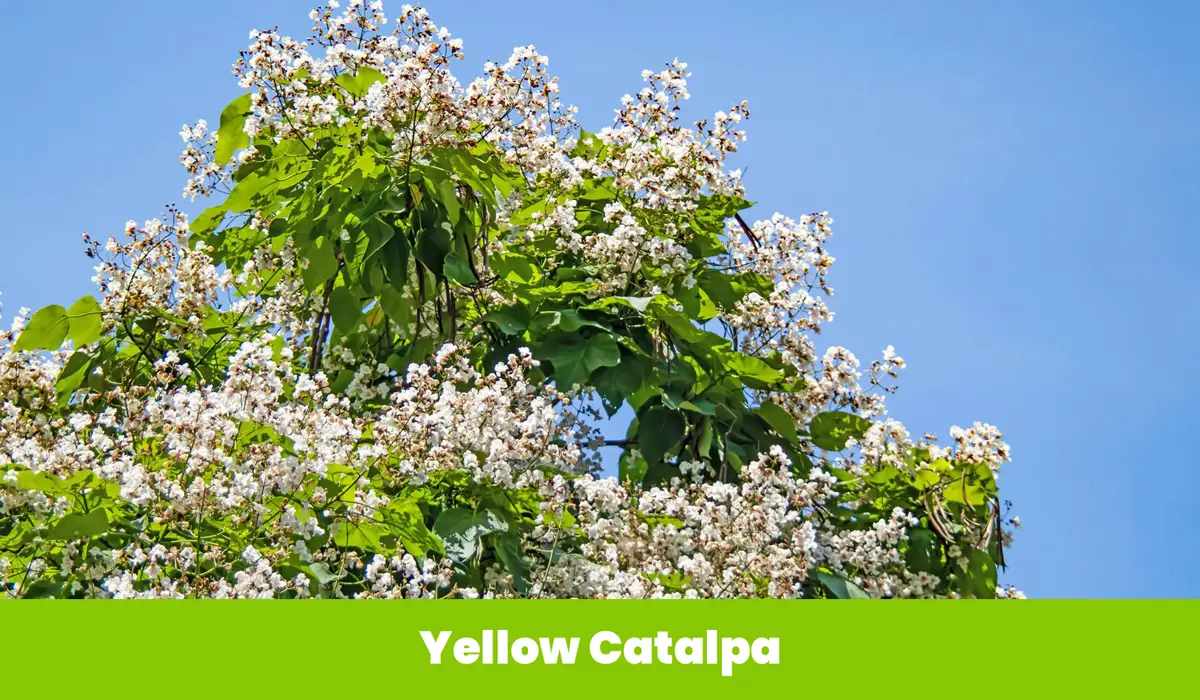
The heart-shaped small, radiant yellow leaves of the Yellow Catalpa make it stand out in the landscape. This deciduous tree reaches 20 to 30 feet tall, with a width of up to 20 feet.
Blooms appear in late spring, bringing forth white or yellowish flowers that look like large orchids. These beautiful blooms attract pollinators, including bees and butterflies, while the large canopy provides shade throughout the summer months.
| Botanical Name: | Catalpa ovata |
| Hardiness Zones: | Zones 4-9 |
| Native Range: | Central China |
| Tolerate: | Drought, wet soils |
| Light Requirements: | Full sun to part shade |
| Soil Type: | Clay, loam, sandy |
| Watering Needs: | Moderate water needs; prefers moist but well-drained soil |
| Fertilizing Needs: | Not needed; can use a light fertilizer in early spring |
| Pruning Needs: | Prune young trees regularly to promote a good branching structure and prevent wind or heavy snow damage. Established trees may need light pruning for size control or to remove dead branches. |
10. Caucasian Lime

The Caucasian Lime tree is a tall deciduous tree with heart-shaped leaves and fragrant white flowers in the spring. Its flowers bloom in late spring or early summer to shape and encourage new growth.
| Botanical Name: | Tilia x euchlora |
| Hardiness Zones: | Zones 3 – 8 |
| Native Range: | Central and Southern Europe |
| Tolerate: | Drought and clay soil |
| Light Requirements: | Full sun to partial shade |
| Soil Type: | Moist, well-drained, sandy or clay soils |
| Watering Needs: | Low water requirements |
| Fertilizing Needs: | Low fertility needs; only fertilizer when leaves yellow in midsummer |
| Pruning Needs: | Little or no pruning is needed. Prune annually for shape, if desired |
11. White Mulberry
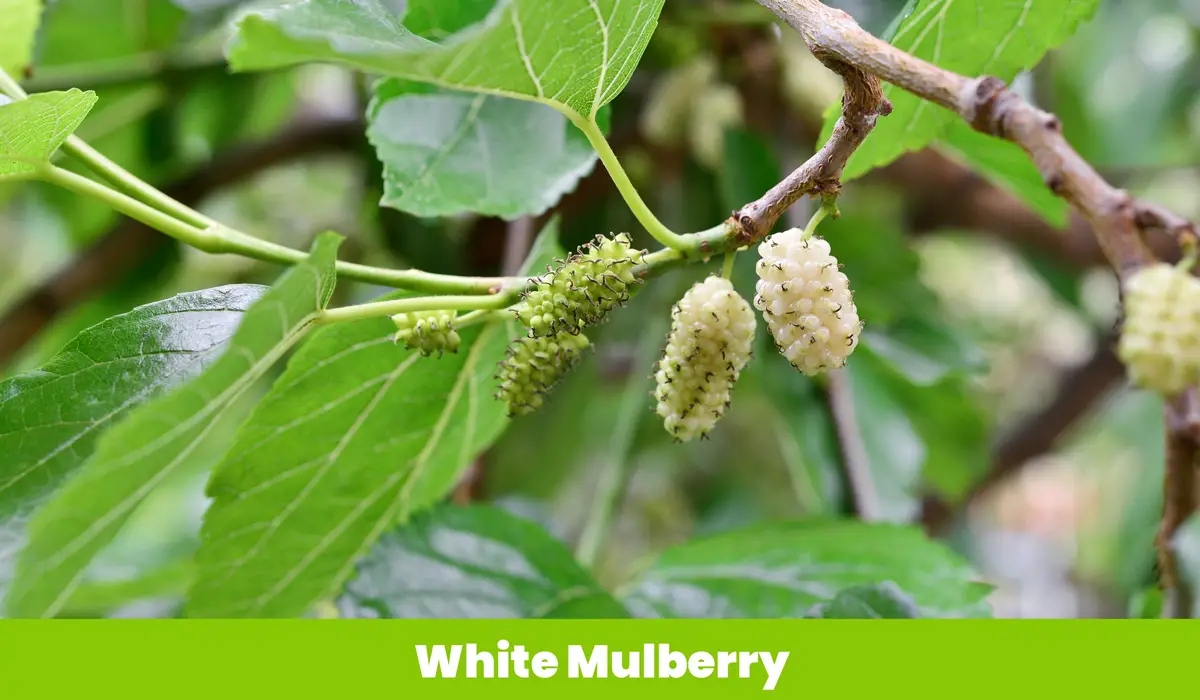
When it comes to trees with heart-shaped leaves, the White Mulberry certainly stands out. Its glowing green foliage turns yellow in autumn, and it grows up to 60 feet tall.
It consists of white flowers in late spring, followed by tasty dark purple fruits which attract birds, butterflies, and other wildlife.
| Botanical Name: | Morus alba |
| Hardiness Zones: | Zone 5 – 10 |
| Native Range: | China |
| Tolerate: | Air pollution, wet soils |
| Light Requirements: | Full sun to partial shade |
| Soil Type: | Well-drained soil with a neutral pH level |
| Watering Needs: | Low water requirements |
| Fertilizing Needs: | Low when established; apply general-purpose fertilizer a few times during the growing season |
| Pruning Needs: | None needed; prune to shape if desired |
Final Thoughts
Trees with heart-shaped leaves add character and beauty to home gardens. From the Eastern Redbud to the White Mulberry, these trees are easy to cultivate and make excellent additions to wildlife gardens.
With various sizes and colors, these trees can provide year-round interest, blooms in spring or summer, and fruit for hungry birds.
With proper care, including watering on an occasional basis during dry periods and pruning for shape or size control, you’ll have a beautiful tree that will last for years to come. If your looking for a pop of color to add to your garden check out my list of 11 purple leaf plants.

Before you go!
Best Indoor Greenhouse
How to Keep Your Greenhouse Cool in the Summer?
12 Fast Growing Indoor Plants
14 Small Rock Garden Ideas